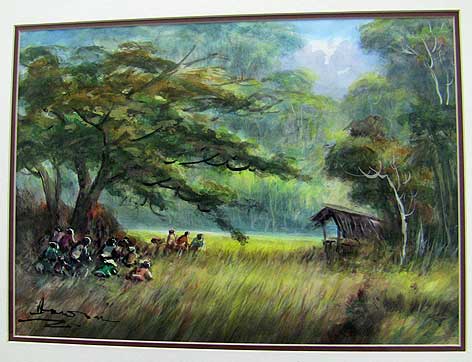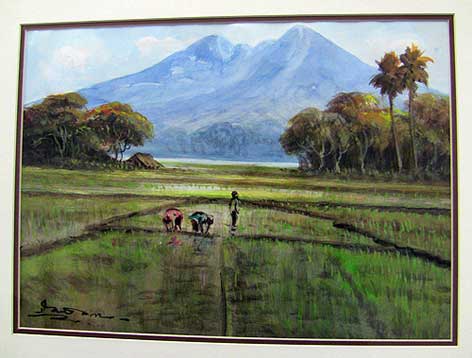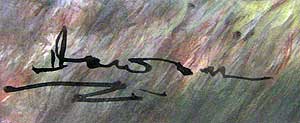The paintings were quite lovely, that was my first thought as I saw them hanging on a wall at the auction house. They were watercolors, clean without any signs of poor upkeep or torn canvas or dusty frames.
Both the paintings and their frames looked to be new and freshly done. Someone had either loved them enough to protect them or didn’t have them long enough for them to be ignored and soon forgotten.

When I saw them among the other pieces at auction, I instantly knew that I wanted them and would bid on them. They had a rural Southern feel to them, and they were almost impressionistic – the people had no clearly drawn features and were more flecks of paint showing human stance and posture.
The images appeared to be African American but I could be wrong. I picked up a small painting at auction two years ago that the auctioneer dubbed African American and the only thing black about it was the sliver of paint on the child’s face. But I’m always on the lookout for works by African American artists and was hoping that this was one. It didn’t matter, though, because the watercolors appealed to me.
One showed people in a field near trees, with the men a little farther in front of what looked to be women and children. To their far right were the remains of a tilting shack of some sort. The people seemed to be looking beyond the structure at something that was not painted onto the canvas. I wondered what could be so captivating.

The other showed people working in a flat field in a valley with blue mountain peaks in the background. One man was looking off into the distance. What was captivating him?
The artist had inked his/her name in the left corner of each but had not given the paintings a title. Initially, the signature was hard to decipher. Was it “I. Lawson,” I wondered. Looking at it more closely, I finally figured out that it was “Dawson” with a stylized D.
The works were so nicely framed that I didn’t want to tear the paper on the back to see if there was more information inside. The top of the paintings were pinched where they had not been completely smoothed down by the framer. I also could see that the paper had risen from its backing in several places under the glass. So I took them to a gallery-owner/framer friend for flattening.

I searched Google for an artist named Dawson with the same style and signature. I came across several, including Morris A. Dawson, an African American artist born in 1928 who primarily created woodblocks and linocuts of the people and street scenes of Harlem. He signed his works “MAD” or “MD.”
There were other artists by the name of Dawson but none seemed to fit.
When the two watercolors came up for bids, I was certain that I would have a lot of competition. I was mistaken; although there were a few other bidders, none wanted them as much as me. So I got them at a nominal price.
I’m still intrigued, though, about Dawson. Who is he/she? A local artist who paints for the love of it? I’d like to know. If you recognize the works and can tell me more about the artist, please leave me a comment in the box below.

Hello! I always enjoy your blog. The painting with the mountain, I think, is Mt. (Kilimanjaro in Tanzania). Just a thought.
Hi Carol. You could be right. Maybe I’m being too U.S.-centric.
Sherry